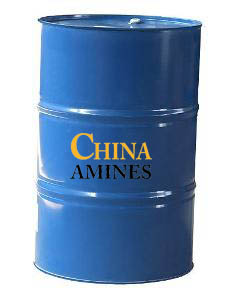Your Questions and Comments
Your sales and customer service desk partners within China Amines Co will continue to serve you. You can also contact us via our headquarter office-
Email:info@chinaamines.com
China Amines Co
Product Profile
Ethylene Dichloride (EDC)
CAS No.: 107-06-2
Synonyms / IUPAC Name: Ethylene dichloride; 1,2-Dichloroethane
Molecular Formula: C₂H₄Cl₂
Molecular Weight: ≈98.96 g/mol
Appearance: Clear, colourless to slightly oily liquid with a chloroform-like odour.
Physicochemical Properties (Typical)
- Melting / Freezing Point: ~−35 °C
- Boiling Point: ~83 °C
- Density: ~1.25 g/cm³ at 20–25 °C
- Solubility: Slightly soluble in water (~7.9 g/L at 25 °C); miscible with many organic solvents.
- Flash Point: ~13–14 °C (closed cup, high-purity material)
- Explosive Limits in Air: ~6.2% (lower) to ~16% (upper) by volume
Purity & Quality Standards
- Typical Purity: ≥99% by GC for commercial grades.
- Appearance: Should be clear, free of visible particulates or haze; colour and odour consistent with specification.
- Stability: Stable under sealed storage conditions, protected from moisture, heat, and direct sunlight.
Applications / Uses
- Intermediate for production of vinyl chloride monomer (VCM), which is used to produce PVC.
- Previously used as a solvent for degreasing, cleaning, asphalt and pavement formulations (usage now limited due to toxicity concerns).
- Also used as a chemical feedstock in organic synthesis and extraction processes.
Safety & Handling
- Hazard Classification: Highly flammable liquid and vapour; vapour heavier than air and may accumulate in low areas.
- Health Hazards:
- Inhalation: Vapours may cause dizziness, headache, and respiratory irritation; high exposures can cause more severe effects.
- Skin Contact: May defat the skin and cause irritation.
- Eye Contact: May cause serious irritation.
- Precautions:
- Use only in well-ventilated areas or under local exhaust ventilation.
- Keep away from heat, sparks, open flames, and hot surfaces.
- Ensure proper grounding and bonding of containers when transferring material.
- Wear protective gloves, eye/face protection, and flame-resistant clothing.
- Reactivity / Incompatibilities: Avoid strong oxidising agents and contact with reactive metals in presence of moisture (risk of corrosion). Vapour may form explosive mixtures with air.
- First Aid Measures:
- Inhalation: Move to fresh air and rest; seek medical attention if symptoms persist.
- Skin Contact: Remove contaminated clothing; wash skin thoroughly with water.
- Eye Contact: Rinse cautiously with water for several minutes; seek medical attention if irritation continues.
- Ingestion: Do not induce vomiting; seek immediate medical attention.
Packaging & Storage
- Packaging: Supplied in sealed, solvent-compatible containers (e.g., metal drums or lined containers) rated for flammable liquids.
- Storage Conditions: Store in a cool (<30 °C), dry, well-ventilated area away from ignition sources and direct sunlight. Keep containers tightly closed when not in use.
- Shelf Life: Stable under recommended storage conditions; inspect appearance, odour, and container integrity before use.
- Transport: Classified as a flammable liquid (UN 1184 – Ethylene Dichloride); comply with applicable transport regulations.


